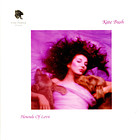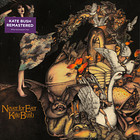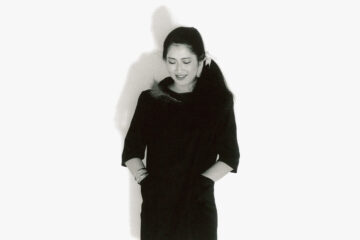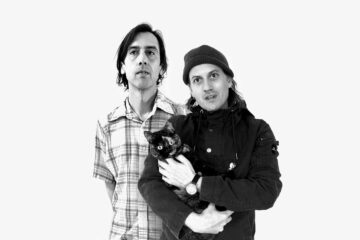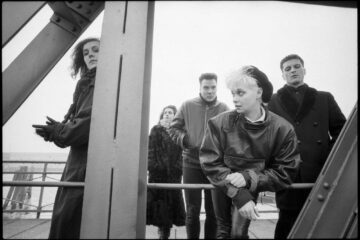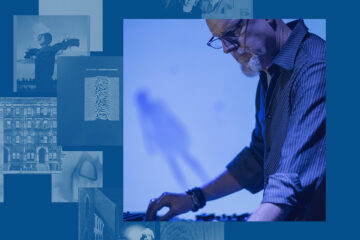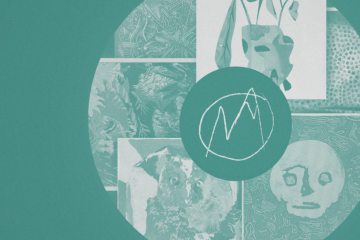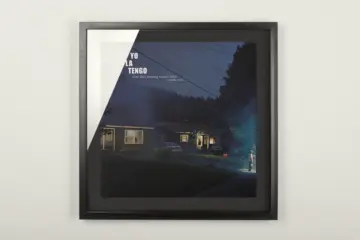»The Secret History of Kate Bush (& the Strange Art of Pop)« is a bizarre book. When it was published in 1983, its author Fred Vermorel was already a notorious figure who had published »anti-biographies« about the Sex Pistols and a previous book on Bush, »Princess Of Suburbia,« together with his wife Judy. They poked fun at the glorification and the (self-)mythologising of pop stars by over-affirming the ways in which fans would overidentify with their idols and overinterpret every aspect of their lives; how they would try to own the people whose songs they like. For Vermorel, this comes with the job: »A pop artist’s art is to project a personality as much as a melody, live out and embody fantasies, to sell habits, quirks and lifestyles as much as ideas.«
Vermorel’s grand thesis is also his fallacy. His biting satire—the book includes a passage in which he describes laying down in the ditch in which one of Bush’s ancestors supposedly died—stands in stark contrast to his apparent obsession with her music. His critique of the affectations of fandom is deeply affected by its object of desire: He, too, was mesmerised by this woman’s work. Hence, his ruminations about Bush’s genealogy, the literary history of her name, her origin in British suburbia do not provide answers for the question that also pressed him: Who is the person behind the projected personality? Who even is Kate Bush?
»It’s me, I’m Cathy / I’ve come home«
Catherine Bush was born on the 30th of July 1958 to Robert and Hannah, a doctor and a nurse with a passion for music and dancing. She grew up in the county of Kent with her two older brothers John and Paddy, King Crimson fans who liked to toy with rare instruments. Years before all four of them would feature regularly on her albums, Bush started writing her own songs at age eleven. She eventually recorded a demo tape that nobody cared for until a mutual friend passed it on to David Gilmour, who sent the 15-year-old into a proper studio and played the results to representatives of EMI while his band Pink Floyd was recording 1973’s »Wish You Were Here.« She was signed shortly thereafter.
Bush studied dance and gigged with the KT Bush Band, featuring her then-partner Del Palmer on bass, before recording her first album »The Kick Inside.« It was released in February 1978 and a month later its lead single »Wuthering Heights« topped the British charts—the first song written and performed by a female artist to do so. Wanting to capitalise on these surprise successes, EMI pressured Bush into rush-recording »Lionheart,« released in November of the same year. A few months later, she went on the sold-out, six-week »Tour of Life.« It was a massive live spectacle whose every aspect—including the band’s diet—was controlled by Bush. After she had come home, she decided she was done with touring.
»The Dreaming« took her roughly one and a half years to make, cost her label a fortune and became the first commercial flop of her career.
Bush preferred the studio to the stage. Having been introduced by Peter Gabriel to the Fairlight CMI, she used the digital sampler on her first co-produced album, 1980’s »Never For Ever,« most notably on the song »Babooshka,« for whose iconic samples of shattering glass she and her team wreaked havoc on the Abbey Road Studios canteen. It was another sweeping success, which is why she managed to convince EMI to exercise full control over the production of 1982’s »The Dreaming.« The album took her roughly one and a half years to make, cost her label a fortune and became the first commercial flop of her career. It also served as a stepping stone towards an even more ambitious, far more successful album.
When Kate Bush handed the masters of »Hounds of Love« to EMI, not a single person at the label had heard a second of it. She had moved out to the countryside and set up her own studio, working on it even longer than on »The Dreaming.« In many senses »Hounds« was more experimental than its predecessor, with the LinnDrum and the Fairlight sampler featuring more heavily and a seven-song cycle about a woman lost at sea taking up the entire B-side. But EMI also got some hits out of it, most notably »Running Up That Hill (A Deal With God),« released in August 1985 before the album’s September 16th release date and to this day her most popular song.
»What am I singing? / A song of seeds / The food of love«
Naturally, her record company followed up on the success of »Hounds of Love« with a greatest hits album while Bush once more took her time to record its successor, the James Joyce-inspired »The Sensual World,« released in 1989. The following years were marked by personal catastrophe for Bush, who lost her mother and her favourite guitarist, Alan Murphy, as well Del Palmer as a romantic partner. She processed all this on 1993’s »The Red Shoes,« which featured heavyweights like Prince, Eric Clapton, Jeff Beck as guests on what was possibly the most conventional-sounding album in her discography since her debut. Bush teased a tour that never happened, and remained largely inactive for another twelve years.
In 1998, Kate Bush gave birth to her son Albert »Bertie« McIntosh and only sporadically worked on what would become her massive double album »Aerial.« Released in 2005, its first part comprised songs that were thematically unconnected, whereas the second chronicles a day spent outside, taking in the world and hearing birdsong—most notably that of the blackbird, visually represented on the cover in the form of a soundwave. In 2011, Bush first released the compilation »Director’s Cut« with reworked versions of songs from »The Sensual World« and »The Red Shoes« before presenting »50 Words for Snow« in November, which besides Bertie also featured Stephen Fry, voicing the titular neologisms for snow.
Three years later, Kate Bush gave her first concerts since 1979. Her 22-part concert residency in London’s Hammersmith Apollo—not incidentally the last venue in which she had performed—was later made available as an eponymous live album, »Before the Dawn.« Besides a massive 2018 reissue campaign through her imprint Fish People and the 2019 B-sides collection »The Other Sides« as well as the short film »Little Shrew,« essentially a belated animated music video for the 2011 song »Snowflake,« Bush has given the world very little since. But the world didn’t stop caring, as indicated by insertions of Bush songs in »The Handmaid’s Tale« and »Stranger Things.«
»I stand outside this woman’s work / This woman’s world«
»RUTH« has lived several lives. It performed very well upon its initial release and became a staple on radio in the following decades, introducing new audiences to the path-breaking album it opens and Bush’s entire oeuvre. Ten years before it topped the charts thanks to »Stranger Things,« a remix had been used to close the Summer Olympics—an event that itself had been opened by the synth-noise duo Fuck Buttons with a direct reference to Bush’s 1981 single »Sat in Your Lap.« All this proved that as a songwriter, producer, singer, and innovator, Bush had become an inspiration to different generations of artists and people. In 2023, she was inducted into the Rock’n’Roll Hall of Fame, and did not attend the ceremony. She already had plans that night.
But who is Kate Bush, that woman who wrote and produced her albums all by herself when that was still an outrageous thing to do, who brought Bulgarian polyphony and Irish folklore to the mainstream while using cutting-edge technology to create literally unheard-of sounds? That woman who was making explicit references to gay anal sex in a song whose video was censored by the BBC six years before »Relax« came out? That woman who sang about a sex psychologist’s attempts at building a weather machine, and before that had written a piece told from the viewpoint of an unborn child afraid of nuclear catastrophe? Who screamed like a donkey in one song and recited 117 digits of the number pi in another?
In 2023, she was inducted into the Rock’n’Roll Hall of Fame, and did not attend the ceremony. She already had plans that night.
It is only natural to ask these questions, but maybe they are the wrong ones. If Bush appears as a mystery to many people, it isn’t because she is a mysterious person. Mysterious people don’t use their official websites as a personal blog in which they thank their fans for birthday wishes or wish them a Merry Christmas every year. Mysterious people don’t give as many interviews as Bush, who especially in her early days seemed positively perplexed about anyone wanting to ask her anything at all. Her answers are usually as straightforward as they are polite. Sometimes, they border on banality: Was there a moment in which she decided to be a singer? »Yes, there was! One day I was with a friend in a park, and I just knew.« Okay.
Bush simply never indulged in the kind of self-mythologising that has always been the bread and butter of pop stars. Instead, she always seemed simply more interested in discussing her work than her private life, because the former had very little to do with the latter: In a 2014 BBC documentary, St. Vincent relays a story about Bush once allegedly saying that she preferred to sing her songs from other people’s perspectives because »they’re more interesting than I am.« This is neither self-deprecation nor a humblebrag, it is a poetological statement made by a writer whose biggest hit is about the desire to switch places with someone else, whose most personal songs are about her relationships with loved and lost ones.
»And there’s a rumour that you’re on ice / And you will rise again someday«
By projecting personalities other than her own, Kate Bush has set herself apart from pop stars who »live out and embody fantasies,« whose job it is to make the personal feel universal. What she succeeds in instead is making the universal seem personal. The mystery of Bush lies in her extensive body work and its unique appeal, in a type of music that is both pop and avant-garde and neither of those things, with lyrics that sometimes are so hyper-specific that they seem opaque. All of that occupies in-between spaces as much as it is in constant dialogue with other forms of art through the ages—with literary history, TV shows and old movies, Pre-Raphaelite paintings, birdsong, and much more.
It is not really possible to understand what connects all these things, and therein lies their beauty. This makes Kate Bush an anti-pop star, which is why Fred Vermorel failed with his anti-biography: Affected by the affectations of the fans he satirised, he too was asking for who Bush really was—even though she is that rare artist whose oeuvre does indeed speak for itself. As of September 2025, the last release on which she was credited is a compilation featuring twelve recordings of silence published by 1.000 artists in protest against her government’s lax approach to copyright with regard to AI. This can hardly be overinterpreted, it leaves no room for overidentification—and is thus the perfect statement by an artist who cannot be owned.


